Global context
Soil is a complex system in terms of geometry and materials, which leads to high spatial variations of soil structure and composition from the microscopic scale to the field, regional, and global extents. This spatial diversity and variability depend on land use, soil management, agricultural practices, as well as soil types and climate. Soil diversity is a key factor influencing ecological processes and soil functioning. Because of this high variability, it is difficult to understand individual soil type functioning and to compare the functions and services offered by different soils. To address these challenges, soil scientists need to reach out to other scientific disciplines, looking for innovative approaches and solutions. In this sense, 3D printing is a promising tool in soil science due to its capability to rapidly produce complex, endlessly replicable, and customizable geometrical structures, in a wide range of controlled materials.
Research goal
The objectives of the project are to develop:
-
a rapid diagnostic tool for assessing the dynamics of decomposition of litter entering the soil. The produced material would be incubated in a large number of soils and its decomposition will be followed over time. It should be endlessly replicable identically, to ensure the strict comparison of pedoclimatic properties on the material decomposition kinetics.
-
a new generation of reproducible soil microcosms supporting experiments dedicated to the understanding of SOC dynamics, such as (i) the investigation of root progression in the soil pore network regulating the source of below-ground input of plant litter to SOC or (ii) the circulation of bacteria in the soil porosity where organic matter is placed as a regulatory step for SOC mineralisation. The replicable model microcosms should exhibit a customizable 3D-arrangement of the pore system, as it is widely recognized as the key driver of SOC dynamics. The microcosms would be distributed to some researchers of the French SOC community (ResMO network “Réseau Matières Organiques”), whose research activities focuses on complementary but distinct drivers of the organic carbon dynamics.
Academical partnerships
Contacts
Pr. Vincent Boly: vincent{at}univ-lorraine.fr




